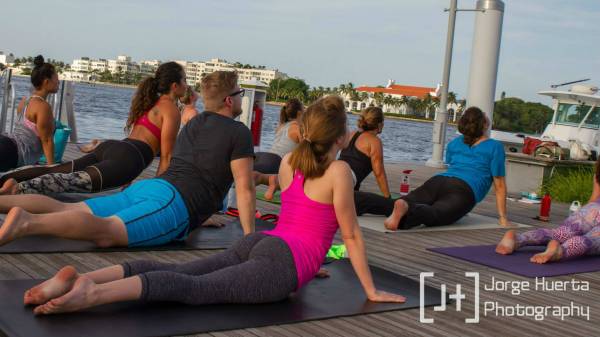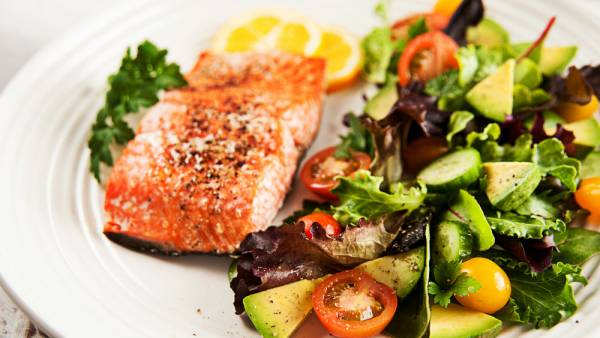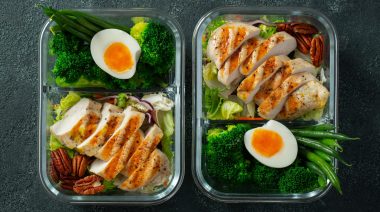You’ve spent hundreds of dollars on programs, books, and workout videos. You’ve stuck to plans for 2-90 days, only to burn out and resort to old ways. Maybe you’ve stopped believing fat loss is possible for you, but you’re ready to try something different that might actually work.
You’ve come to the right place.
It Starts In Your Mind
The first step to any new process is making up your mind to get started. At this point, you need to think about your visions and goals. What does a healthy you look like, inside and out? Without a clear vision of the person you want to become, the daily grind of getting there doesn’t make as much sense.
Grab a piece of paper and write down three personal goals for yourself. For instance:
- I am working in a job I love.
- Exercise is part of my daily routine and I engage in a well-rounded balance of yoga, CrossFit, and long walks and hikes with my dogs.
- I sleep 7-8 hours per night.
This program lasts for twelve weeks and is broken into two phases. Phase one is all about preparation. Twelve weeks may seem like a long time, but time flies, and it’s really not long in the scheme of your life. I recommend purchasing a Passion Planner to keep you on track. I like the undated classic full-size version for organizing inspiration, goals, and successes.
Dream big, dig deep, and ask yourself: Am I ready to commit to this process?
You deserve to feel strong and comfortable in your own body .
Weeks 1-2: Preparation
Now that you’ve committed to the process of reaching your goals, it’s time to get prepared. The first two weeks of my body fat loss template involves getting acquainted with these basic elements:
- Real-food nutrition
- Functional fitness
- Restorative sleep
- Stress management
- Leaving behind old lies you’ve believed about yourself, your food, and your future
- Taking time out for you and the things that bring you joy
- Choosing to live with intention
For weeks one and two, we’ll focus on the following aspects of preparation and establish a few basic habits to help in your journey.
1. Fill the Pantry With Real Food
Here’s a list of your best food friends to always have on hand:
- Meats and seafood
- Fresh vegetables
- Nuts and seeds
- Healthy fats and oils
- Fruit
- Water
Remember: Little starch, no sugar, and lots of water. It’s time to also throw the following items out:
- Bread
- Frozen dinners
- Ice cream
- Snack bars
- Cereal
- Snack crackers
- Artificially sweetened foods
- Foods with long ingredient lists
- Conventional dairy products
- 100-calorie snack packs
- Sugar
- Alcohol (It’s full of sugar and not going to help your efforts at all right now.)
Be aware of your food’s quality. There is a big difference in the quality of a fast-food Big Mac with large, over-salted greasy fries and a homemade grass-fed bison burger patty served in a lettuce wrap with juicy tomato, sliced avocado, and side of homemade sweet potato wedges. Shopping the perimeter of the grocery store will help you focus on meats and produce.
2. Hydration
If you don’t have a water bottle with you at all times, chances are that you are not drinking enough. The amount of water you need is based on a number of factors, including your size, activity level, sweating/climate, and your diet. As a baseline, drink half your bodyweight (measured in pounds) in ounces each day. For example, if you weight 140lb, aim to drink at least 70oz of water each day.
3. Meal Template
As far as meals go, here is a basic meal template:
- Breakfast: protein, veggies (optional but recommended), fat, and maybe a piece of fruit
- Lunch: protein (1-2 palm-size servings), veggies, and fat (1-2 thumb-size servings)
- Dinner: protein, veggies, and fat (1-2 thumb-size servings)
- Snack(s): protein or protein + fat, or protein + fruit/veggie, or fat + fruit/veggie
Breakfast Ideas:
- 1-2 chicken sausage patties (Applegate Farms/Wellshire Farms), sautéed greens (spinach, chard, collards, etc.), ½ avocado
- 2-3 eggs (cooked in bacon fat or ghee), greens and mushrooms, 2-3 slices nitrate-free bacon/turkey bacon, small bowl of berries
Lunch Ideas:
- Big hearty salad: spinach (or other greens of choice), pulled chicken (1-2 palm sizes), extra veggies of choice (zucchini, green beans, asparagus, etc.), ⅓ cup coconut flakes (unsweetened) or 6-8 nuts (pecans, cashews, walnuts, etc.), oil/vinegar drizzled on top
- 1-2 grass-fed beef/turkey burger patties (no bun), ½ avocado, lettuce, tomato, steamed broccoli, homemade sweet potato wedges drizzled with coconut oil and cinnamon
Dinner Ideas:
- Spaghetti squash with meat sauce (grass-fed beef/turkey/bison in homemade tomato sauce, no sugar), steamed broccoli with 1-2 teaspoons Kerrygold grass-fed butter
- Baked Dijon herb boneless skinless chicken thighs with coconut cauliflower rice and rainbow chard sautéed in 2 teaspoons coconut oil
If you are not comfortable with cooking in the kitchen, there is no time like the present to change that.
4. Cooking and Meal Prep
If you are ready to make sustainable changes in the name of your health, then meals prepared at home are a must. Of the 21 total main meals you consume in a week, aim for at least 17-18 of those to be from home.
Breakfast is an easy place to start because you’re typically home in the mornings. For meals away from home, invest in a lunchbox cooler and ice packs for packing on-the-go snacks and meals. Keep frozen/raw meat, veggies, and even pre-cooked and pre-sliced items on hand at all times so dinner is easily prepped within 10-20 minutes upon arriving home. Some people find setting aside 2-3 hours, 1-2 days a week for meal prep is a great way to ensure they are well fed.
Here are a few of my favorite websites for real-food recipe inspiration:
5. Exercise
No exercise prescriptions here other than walking. Aim to make walking a more prominent part of your day. If you have been over-exercising in attempts to lose fat, this is your permission to stop the endless cycle. This is a chance to re-wire your body.
For the next two weeks, give yourself permission to explore the kind of exercise that brings you to life. Make a list of the classes you want to check out, or what your ideal exercise plan would look like. Some cool options include: yoga, dance, a boot camp, acro-yoga, rock climbing, surfing, swimming, paddleboarding, or rowing. And if you have absolutely no clue where to start, hold tight. An exercise plan is coming in phase two.

Try something new, like an outdoor yoga class. Now is your chance.
6. Sleep
You’ve heard this before, but 7-9 hours is ideal, especially if you want to change your body composition. If you have trouble sleeping or wake up at an ungodly early hour every day, consider getting a wake light. Wake lights tap into your circadian rhythms to help stir your body and cortisol levels more naturally, despite lack of natural sunlight upon waking.
7. Mindfulness
Committing to change takes hard work. These shifts won’t happen overnight. The main thing I want you to work on for the next two weeks in regard to food and exercise is to increase your mindfulness. There are two strategies I want you to use to do so:
- Keep a Food Log: Log everything you eat every day for the first two weeks, coupled with a mindful eating log. This mindful eating log will include the level of hunger and fullness you experienced on a scale of 1-10 before and after the meal, as well as any feelings you experienced around mealtime.
- Choose a Mantra: Pick a mantra of motivation and encouragement to remind you why you deserve to succeed, For example, “I am worth it;” “I deserve to stop settling and start living;” or “I was meant to thrive.”
Continue to page 2 for weeks 3-4 of the program.
Weeks 3-4: Cleaning It Up
Now that you’ve had two weeks to think about what your new body-fat loss plan will look like and have laid plans to make that happen, it’s go time.
You’ve been keeping a food journal and learning how foods affect you. Keep it up. Don’t change anything you’ve started in the last two weeks, but add a few new things.
Food Portions
No weighing, measuring, or counting calories. Instead, here’s a snapshot of how each food group should look on your plate:
- Protein: ⅓ of your plate, about 1-2 palm sizes/deck of cards
- Veggies: ½ of your plate
- Fruit: Handful/fist size (e.g., bananas or apples: ½ large, ¾ medium, or 1 small)
- Fats: 1-2 servings (thumb or golf ball size)
Don’t forget to throw out the scale. Just like you are not weighing and measuring your food, you are not weighing and measuring yourself. Focus on fueling your body with foods that help you thrive.

Eat a rainbow of colors every day.
Food Hygiene
Chew your food thoroughly. Sit down to enjoy your meals. Put your fork down between bites. Optimal digestion occurs in a parasympathetic (relaxed) state, so if you want to start feeling great in this process, start digesting your food properly.
In addition, add probiotics to your diet to aid in the optimal digestion of these delicious meals. Probiotics promote good gut flora. The more good bacteria are present, the better your digestion and fat loss efforts are going to be.
Final Thoughts
Consistency is essential for this program work. If you are not ready, or believe that you can justify some of your old habits while trying to form new ones, your efforts will not be as effective. It’s completely up to you to be consistent and meet your goals. Are you ready?
Please share questions or comments below, and keep an eye out for phase two!
More Advice From Lauryn:
- 2 Simple Steps to Meal Prep Success
- Intuitive Eating: Are You Listening to Your Body’s Signals?
- 1 Simple Step Anyone Can Take to Improve Digestion
- New on Pulse Beat Fit Right Now
Photo 2 courtesy of Jorge Huerta Photography.
Photo 3 courtesy of Shutterstock.






